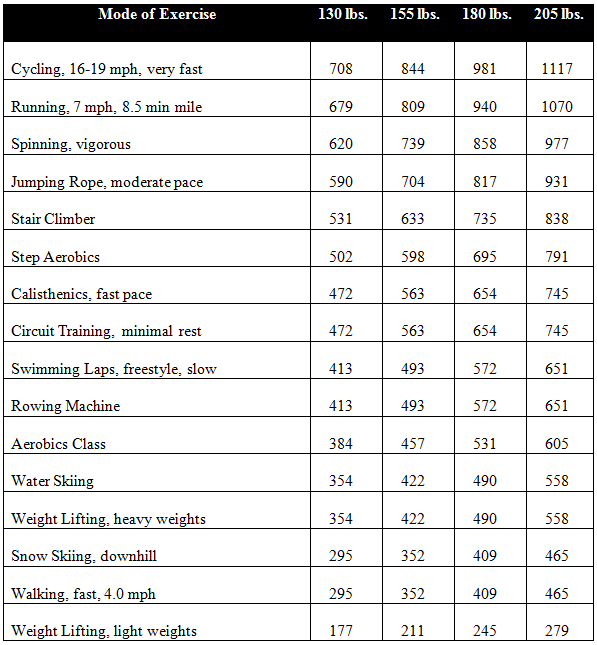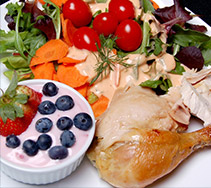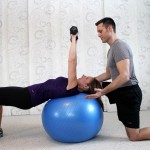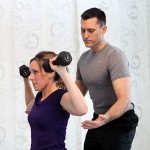Functional fitness training combines exercises that train your muscles to perform everyday activites safely and efficiently. Most people exercise in order to improve their health and quality of life. This is exactly what funtional fitness training does. Training and developing your muscles in this way will help you to perform daily activities such as carrying groceries, shoveling snow, walking up and down stairs, or just running around the backyard with your kids.
According to the Mayo Clinic, functional fitness exercises train your muscles to work together and prepare them for daily tasks by simulating common movements you might do at home, at work, or in sports. As I teach my clients these multi-muscle group movements, I emphasize the use of core stability and strengthening in each exercise. I encourage clients to perform these exercises on a BOSU, balance discs, or balancing on one leg.
Functional exercises should involve multijoint and multimuscle group exercises. For example, instead of doing just a standing bicep curl moving only the elbow joint, perform a squat on a BOSU with a bicep curl. Or, take a basic lunge. You can make this more challenging by adding a lunge and shoulder press together. Some examples of functional fitness training using multimuscle group exercises can be seen on our YouTube channel and in our Photo Gallery. Performing theses exercises properly and consistantly may help to improve your overall quality of life and reduce injuries as you age.
Older adults and seniors will certainly benefit from functional fitness exercises. These exercise will help to increase overall strength, coordination, and balance which may reduce the risk of falls. Funtional fitness training is a weight-bearing activity and can help to prevent and, in some individuals, reverse osteoporosis.
If you are new to exercise, are elderly, or pregnant, it is best to check with your doctor before performing multimuscle group funtional training. This type of training is a little more advanced and requires focus and concentration and will be sure to get your heart rate up. Always remember, if there are more muscle groups moving at one time then the heart must pump higher amounts of oxygenated blood throughout the body to keep those muscles moving. Therefore, you are not only strengthening your muscles, you are also making cardiovascular improvements as well!
Adding functional fitness training to your workouts will certainly improve your overall health and well-being and will make your daily life stresses a little easier to deal with.








